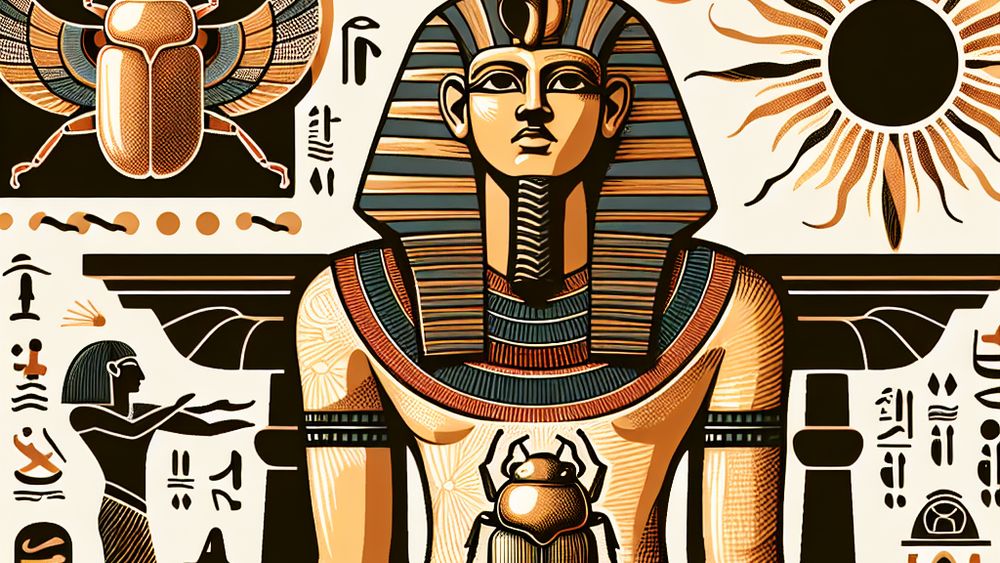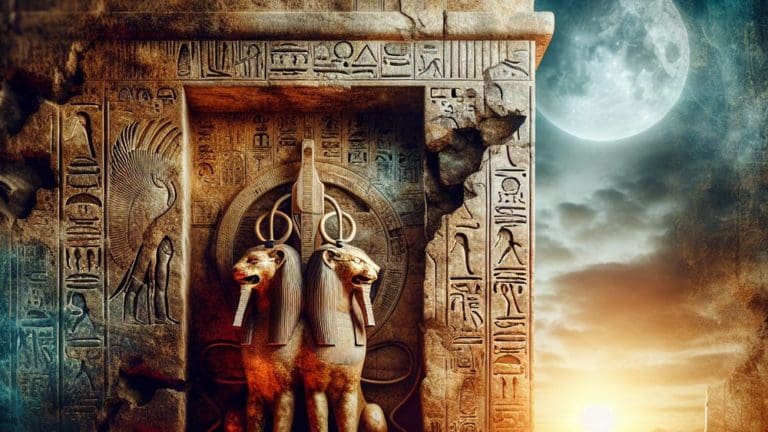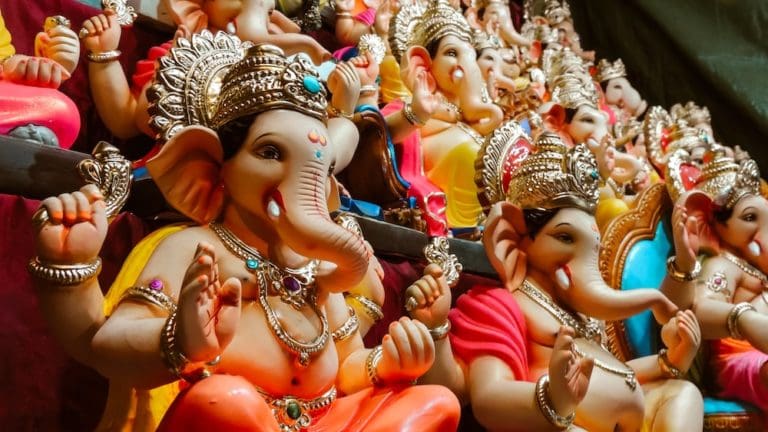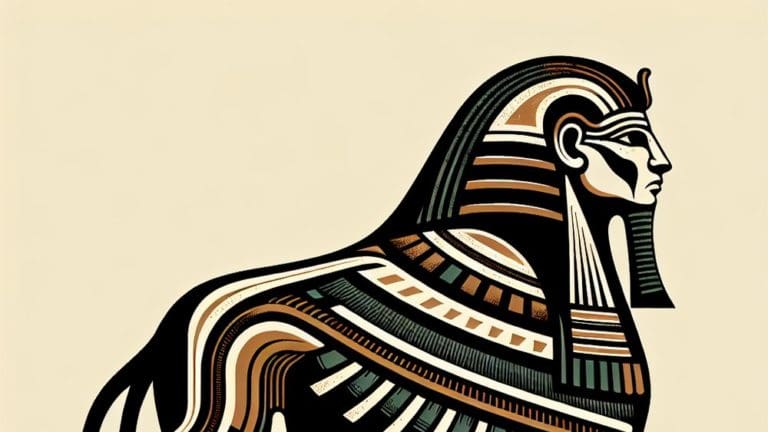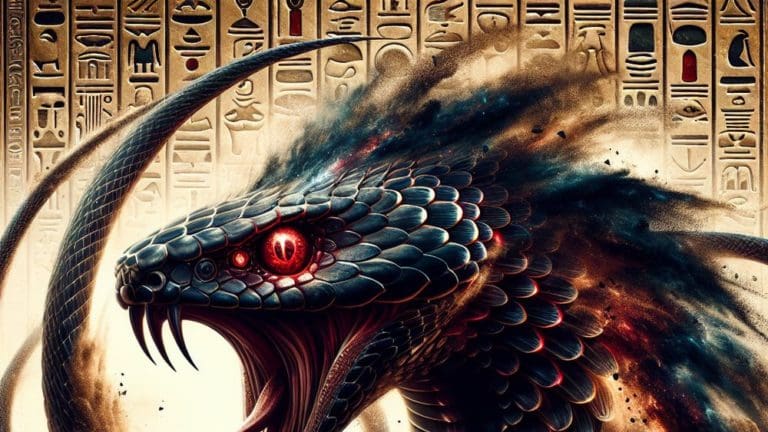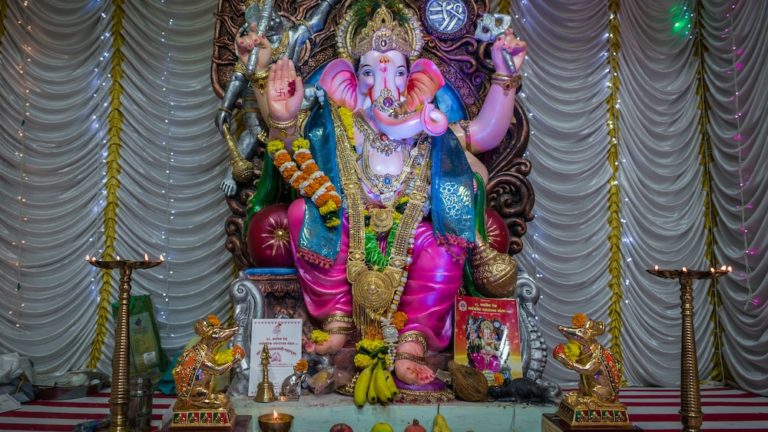All About Egyptian God Khepri: Mythology And Symbolism
All About Egyptian God Khepri: Mythology And Symbolism
Have you ever wandered through the annals of history, brushing aside the sands of time to reveal the gleaming treasures of ancient civilizations? Today, we dive deep into the heart of ancient Egypt to uncover the mysteries surrounding the Egyptian god Khepri, a deity that epitomizes the eternal cycle of life, death, and rebirth. Let’s embark on this journey of discovery, fueled by our unquenchable thirst for knowledge and driven by our passion for unveiling the secrets that the past holds.
Key Points:
- Khepri is an Egyptian god symbolizing morning sun, creation, and rebirth.
- Khepri’s name means to come into being, reflecting his association with the dawn and sun.
- Khepri is linked to Ra and Atum, representing different aspects of the sun’s journey.
- Symbolized by a scarab beetle, Khepri signifies renewal, rebirth, and the eternal cycle of life.
- The scarab beetle symbolizes protection and eternal life in Egyptian mythology.
- Worship of Khepri was prominent in Heliopolis and Thebes, centers of sun worship.
- Khepri’s role in Egyptian mythology highlights themes of resurrection, renewal, and the eternal cycle of life.
Khepri, more than just a name in the egyptian pantheon, represents the morning sun and the concept of creation and rebirth. Imagine, if you will, a god so powerful, his mere presence heralds the dawn, rolling the sun across the sky as a scarab beetle pushes a ball of dung across the ground. Such imagery and symbolism invite us to explore deeper, to understand the essence of this deity and the pivotal role he played in the lives of the ancients. Join me as we peel back the layers of history, seeking answers and perhaps, uncovering more questions.
The Essence and Origins of Khepri
The Egyptian god Khepri is an enigma, wrapped in the mysteries of ancient Egyptian religion and culture. At the core of Khepri’s essence is the role of the sun god, embodying the rebirth of the sun each day, a powerful symbol of renewal and continuation of life. His name itself is a clue, rooted in the verb “to come into being”. This connection to the dawn and the sun offers a tantalizing glimpse into the importance of Khepri in the mythological and religious landscape of Egypt.
Understanding Khepri’s Role in Egyptian Mythology
Khepri’s role in Egyptian mythology is as fascinating as it is vital. He is the sun god of the morning sun, responsible for the rebirth of the sun each day. This task, symbolic of life’s renewal, places him at the heart of the cycle of life, death, and rebirth, a continuous loop that echoes the Egyptians’ beliefs about the universe and their own existence.
- Morning sun: Symbolizes the dawn and new beginnings.
- Creation: Associated with the act of bringing the sun into the sky.
- Rebirth: Emblematic of the endless cycle of life and regeneration.
- Solar deity: Represents the sun’s power and its vital role in the sustenance of life on earth.
This divine responsibility Khepri bears, subtly weaves into the fabric of everyday Egyptian life, influencing cult practices, art, and culture in profound ways.
Khepri’s role as the morning sun god symbolizes new beginnings and the endless cycle of life and regeneration, influencing every aspect of Egyptian life.
The Etymology and Symbolism Behind Khepri
The name Khepri is derived from the Egyptian verb “kheper”, meaning “to develop” or “to come into being”. This etymology directly ties to the visual representation of Khepri as a scarab beetle, an insect that Egyptians observed pushing balls of dung across the ground – actions that mirrored the movement of the sun across the sky.
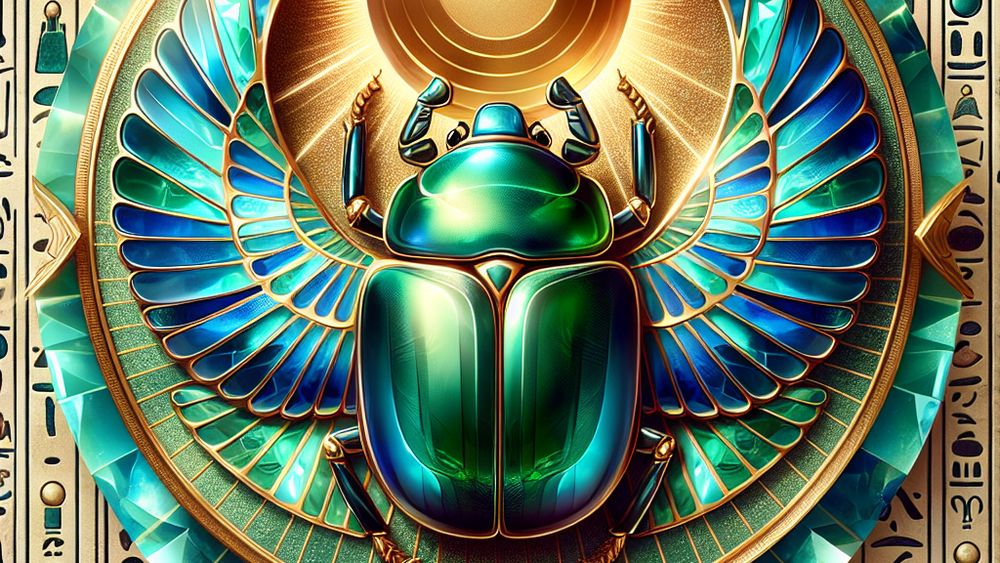
- Name meaning: “To come into being”, reflecting the god’s association with creation and rebirth.
- Scarab beetle: Symbolizes transformation, renewal, and the eternal cycle of the sun.
- Dung balls: Represent the sun disk being rolled across the sky.
- Sun god: Highlights Khepri’s role in renewing the sun’s journey every day.
This symbolism envelops Khepri in an aura of mystique and reverence, earmarking him as a key player in the process of creation and regeneration in the ancient Egyptian belief system.
Khepri’s Family Ties and Relationships
Relatively little is known about Khepri’s family ties within the pantheon of Egyptian gods, yet his connections offer insight into the complex relationships that define the mythological world of ancient Egypt.
- Ra: Often considered aspects of the same deity, with Ra representing the noon sun and Khepri the morning sun.
- Atum: Another sun god associated with the evening sun, completing the cycle of the sun’s journey through the sky.
- Nun: The primordial waters from which Khepri, in the form of a scarab beetle, is said to emerge, symbolizing the creation of life from the chaos.
Through these relationships, Khepri is intricately woven into the fabric of Egyptian mythology, representing not just the physical sun, but also the conceptual renewal of life and the universe itself.
Khepri’s relationships with Ra, Atum, and Nun illustrate his integral role in Egyptian mythology, symbolizing both the physical sun and the spiritual rebirth of life and the universe.
The Iconography and Worship of Khepri
The visual representations and adoration of the Egyptian god Khepri are enveloped in layers of mystique and reverence, revealing the profound impact this deity had on ancient Egyptian spiritual practices. Khepri, embodying the morning sun, was venerated not just as a god but as a symbol of rebirth and renewal, a beacon guiding the Egyptians through the endless cycle of night and day.
Depictions and Symbols Associated with Khepri
In the rich tapestry of Egyptian mythology, Khepri takes on a fascinating form, represented not only as a man with a scarab beetle for a head but also entirely as a beetle. This visual symbolic representation brings to mind the scarab beetle’s habit of rolling dung across the ground, an act that the Egyptians saw as a metaphor for the sun’s daily journey across the sky.
| Symbol | Representation | Meaning |
|---|---|---|
| Scarab Beetle | As Khepri’s head or full body | Renewal, rebirth, the rising sun |
| Rising Sun | Often depicted with Khepri | New beginnings, creation |
| Blue or Green Scarab | In amulets and artworks | Eternal life, protection |
The Significance of the Scarab Beetle
The scarab beetle occupies a place of honor in Egyptian mythology, intricately linked with Khepri, the god of the rising sun and renewal. This creature, with its habit of rolling dung balls across the ground, became a powerful symbol of life, rebirth, and the sun’s daily resurrection. [1]
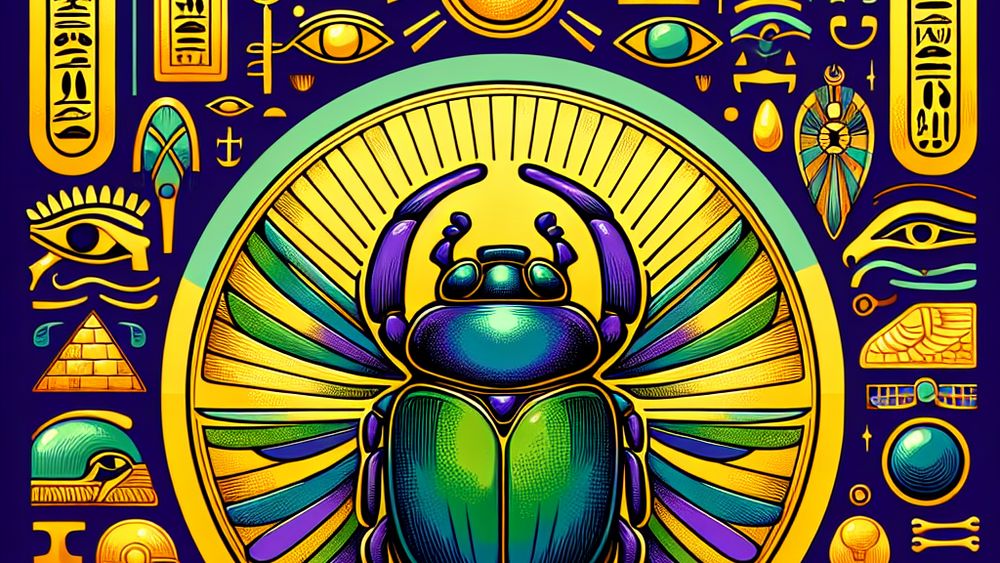
- Lifecycle mirroring: The Egyptians observed the scarab beetle’s lifecycle and likened it to the eternal cycle of life, death, and rebirth.
- Symbol of protection: Amulets in the shape of a scarab beetle were believed to offer protection and were often placed on the hearts of mummies.
- Association with the sun: The dung balls rolled by the scarab were seen as analogous to the sun’s journey across the sky, embedding the beetle as a symbol of the sun god, Khepri.
These interpretations of the scarab’s behavior resonated deeply with the Egyptian understanding of the world’s cyclical nature and the constants of existence.
The scarab beetle symbolizes life, rebirth, and the sun’s renewal, embodying the eternal cycle of existence in Egyptian mythology.
Centers of Worship and Cult Practices
While Khepri was a central figure in the mythology and religious landscape of ancient Egypt, specific centers focused on the worship and rituals dedicated to him. His veneration was interwoven with the broader worship practices of the Egyptian sun gods, illustrating the complexity and interconnectedness of this pantheon.
- Heliopolis: A major center for sun worship, acknowledging Khepri’s role in the morning sun.
- Thebes: Temples and monuments here also celebrated Khepri, particularly in rites of rebirth and renewal.
The worship of Khepri, therefore, was not confined to a single location but was part of a widespread reverence for the forces of creation, renewal, and the eternal cycle of day and night that framed ancient Egyptian existence.
FAQs
1. How did Khepri influence ancient Egyptian daily life?
Khepri influenced ancient Egyptian daily life deeply by embodying the force of renewal and rebirth. Egyptians would start their day invoking his protection, hoping to harness his power to revive their spirit and bring about new beginnings. His manifestation as a scarab beetle, rolling the sun across the sky, also became a symbol of creation and life, deeply woven into the fabric of Egyptian daily rituals and beliefs.
2. Can Khepri be linked to any other gods in Egyptian mythology?
Yes, Khepri can be linked to other gods in Egyptian mythology, most notably Ra and Atum. He represented the morning sun, Ra the midday sun, and Atum the evening sun. This connection highlights the Egyptians’ understanding of the sun’s cycle as a metaphor for the eternal cycle of life, death, and rebirth. Khepri’s relationship with these deities emphasizes his importance in the pantheon and the unified nature of solar theology in ancient Egypt.
3. What are some modern interpretations or influences of Khepri?
Some modern interpretations of Khepri continue to highlight his embodiment of rebirth and renewal. In contemporary spirituality, the scarab beetle symbol, representing Khepri, is often used as an amulet or talisman for personal transformation and self-generation. Additionally, in modern literature and media, Khepri’s themes are woven into stories that explore themes of resurrection, renewal, and the unending cycle of the sun and life.
4. Are there any significant myths or stories specifically about Khepri?
There are no specific myths entirely dedicated to Khepri, but he features in broader Egyptian creation myths as the self-created god who rolls the sun out of the darkness each morning. This act, symbolic of the daily renewal of life, is a significant part of his story. Khepri’s role in these creation narratives highlights his critical function as the bringer of light and renewal, influencing various aspects of Egyptian mythology and religious practice.
Conclusion
Exploring the myths and mysteries surrounding Khepri reveals the profound depth of ancient Egyptian worship and understanding of the natural world. The god’s association with the scarab beetle, embodying concepts of rebirth, renewal, and the perpetual cycle of the sun, showcases the Egyptians’ intricate beliefs in regeneration and the afterlife. Recognizing the significance of the Egyptian god Khepri in ancient times opens a window to the past, allowing us to appreciate the continuity of life and the enduring power of belief.
Warmly inviting my fellow travelers and history enthusiasts to join me on this ongoing journey of discovery, I hope we can continue to unravel the mysteries of the egyptian god khepri together. With every uncovered story and deciphered symbol, we keep the spirit of the past alive for future generations to cherish. Until our next adventure, stay curious. Warm wishes, Cedric

